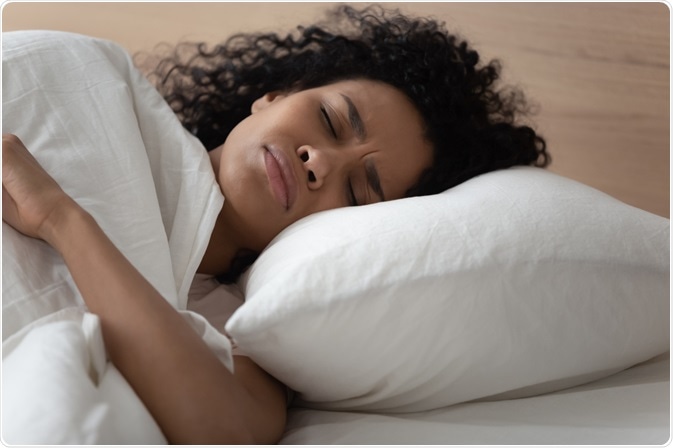Hypersomnia, also known as hypersomnolence, is a condition involving excessive daytime sleepiness or prolonged nighttime sleep on a recurring basis. Adolescents and young adults are most likely to be affected by the condition.
It often causes affected individuals to take repeated naps throughout the day, which may disrupt other activities, such as work, study or social activities. These naps typically only provide temporary relief of symptoms and the desire to nap returns shortly afterward.

Image Credit: fizkes / Shutterstock
Common Symptoms
It is common for people with hypersomnia to have difficulty waking up, particularly after a long sleep. They may feel disorientated and confused, which can continue for several hours in some patients.
Excessive daytime sleepiness is the defining symptom of hypersomnia, despite getting a full night’s sleep. This may inhibit affected individuals from participating in daily routines or events. Additionally, it can be more difficult for them to maintain normal function in family, social and work environments.
It can cause affected individuals to perform poorly and may lead to distress about other areas of their life. In particular, patients affected by hypersomnia are more likely to suffer from depression and anxiety than the general population. Although not all patients experience other signs and symptoms, hypersomnia may also be associated with:
- Anxiety
- Agitation
- Clouded thought processes and decision-making
- Depression
- Hallucinations
- Low energy levels
- Reduced appetite
- Reduced memory
- Restlessness
- Slow speech
Diagnostic Techniques
The primary diagnostic criterion for primary hypersomnia is excessive daytime sleepiness for at least one month in acute conditions or three months in persistent conditions. This is marked by reports of prolonged episodes of sleep or frequent daytime napping at least 3 times per week.
Some individuals may have a genetic predisposition to hypersomnia and family history of similar symptoms should, therefore, also be discussed during the patient consultation.
It is useful if the patient is able to keep a sleep diary to record the sleeping habits and associated symptoms, which can be indicative of hypersomnia or other sleeping disorders. This should include the time to go to sleep and wake up, any disruptions or periods of wakefulness in the night and the frequency and duration of naps during the day.
Polysomnography monitors the sleep patterns of an individual over the course of an entire night, which can help to rule out other conditions, such as narcolepsy or sleep apnea.
A multiple sleep latency test to determine the time to fall asleep during the day can also be useful, as a patient with hypersomnia usually falls asleep easily within eight minutes.
Differential Diagnosis
Excessive sleepiness often occurs as a symptom of several other sleep disorders and should be differentiated from hypersomnia. These related disorders include:
- Narcolepsy
- Sleep apnea
- Circadian rhythm sleep disorders
- Parasomnia sleep disorders
The defining characteristic of hypersomnia is extended and uninterrupted sleep at nighttime. Unlike other sleeping disorders, idiopathic hypersomnia is associated with increased sleep without complaints of waking up during the night. Despite getting a good night’s sleep, affected individuals continue to feel tired during the day with the need to nap, which provides little relief of symptoms.
In rare cases, hypersomnia can present as a result of a more serious health condition, such as a tumor or injury to the central nervous system. If this is a possibility, tests should be used to examine this further to detect the cause and enable the appropriate treatment.
References
Further Reading